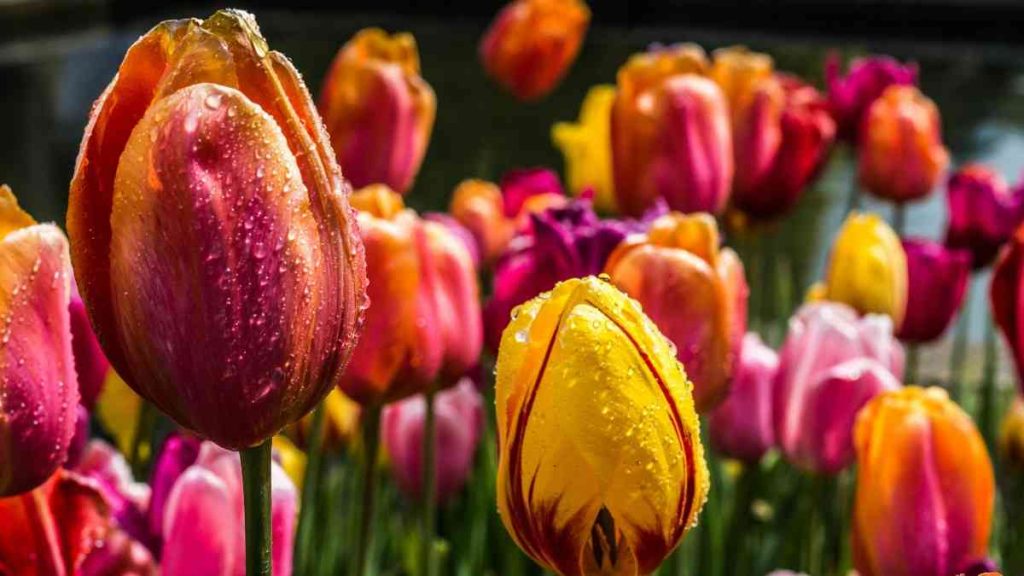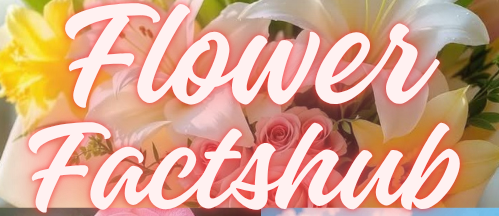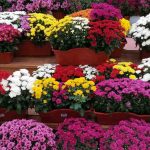Flowers are one of nature’s most enchanting creations, bringing color, fragrance, and joy to our lives. Whether you’re a gardening enthusiast, a flower lover, or simply someone who appreciates beauty, understanding the different types of flowers can deepen your appreciation for these natural wonders. In this guide, we’ll explore various types of flowers, their unique characteristics, and how they can be used to brighten up your garden or home.
Types of Flowers
1. Roses: The Classic Beauty
Roses are perhaps the most iconic flowers in the world, symbolizing love, beauty, and passion. They come in a variety of colors, each with its own meaning.
- Popular Varieties: Hybrid Tea Roses, Climbing Roses, Floribunda Roses.
- Uses: Bouquets, weddings, garden decoration.
- Care Tips: Requires well-drained soil, regular pruning, and plenty of sunlight.
2. Sunflowers: The Symbol of Happiness
Sunflowers are known for their bright yellow petals and towering height. They symbolize positivity and loyalty.
- Key Features: Can grow up to 12 feet tall, follow the sun (heliotropism).
- Uses: Ornamental purposes, sunflower oil production.
- Fun Fact: Sunflowers are native to North America and were cultivated by Indigenous tribes for food and oil.
3. Tulips: The Herald of Spring
Tulips are synonymous with spring and come in a wide range of colors and shapes. They are perfect for adding a splash of color to your garden.
- Popular Varieties: Parrot Tulips, Darwin Hybrids, Double Tulips.
- Uses: Garden beds, cut flower arrangements.
- Care Tips: Plant bulbs in the fall, prefer cool climates.

4. Orchids: The Exotic Elegance
Orchids are exotic flowers known for their intricate shapes and vibrant colors. They are a symbol of luxury and refinement.
- Popular Varieties: Phalaenopsis, Dendrobium, Cattleya.
- Uses: Indoor decoration, gifts, corsages.
- Care Tips: Requires indirect light, high humidity, and well-draining soil.
5. Lilies: The Fragrant Beauties
Lilies are famous for their large, fragrant blooms and are often associated with purity and renewal.
- Popular Varieties: Asiatic Lilies, Oriental Lilies, Calla Lilies.
- Uses: Weddings, funerals, garden borders.
- Fun Fact: Lilies are toxic to cats, so keep them away from your furry friends.
6. Daisies: The Simple Charm
Daisies are cheerful flowers that symbolize innocence and purity. They are easy to grow and maintain.
- Key Features: White petals with a yellow center, though some varieties come in pink and purple.
- Uses: Wildflower gardens, bouquets, ground cover.
- Care Tips: Thrives in full sun, requires minimal watering.
7. Peonies: The Romantic Blooms
Peonies are lush, fragrant flowers that are a favorite in weddings and romantic settings.
- Popular Varieties: Herbaceous Peonies, Tree Peonies, Itoh Peonies.
- Uses: Bridal bouquets, garden focal points.
- Care Tips: Plant in well-drained soil, avoid overwatering.
8. Lavender: The Fragrant Herb
Lavender is not only a beautiful flower but also a versatile herb known for its calming fragrance.
- Key Features: Purple spikes, aromatic foliage.
- Uses: Essential oils, culinary purposes, garden borders.
- Fun Fact: Lavender is often used in aromatherapy to reduce stress and anxiety.
9. Hydrangeas: The Color-Changing Blooms
Hydrangeas are known for their large, colorful flower heads that can change color based on soil pH.
- Popular Varieties: Bigleaf Hydrangeas, Panicle Hydrangeas, Oakleaf Hydrangeas.
- Uses: Garden shrubs, cut flower arrangements.
- Care Tips: Prefers moist soil, partial shade, and regular pruning.
10. Marigolds: The Vibrant Annuals
Marigolds are bright, easy-to-grow flowers that are often used in gardens to repel pests.
- Key Features: Orange, yellow, or red blooms, strong scent.
- Uses: Companion planting, festive decorations.
- Fun Fact: Marigolds are a key ingredient in Day of the Dead celebrations in Mexico.
11. Carnations: The Long-Lasting Blooms
Carnations are popular for their ruffled petals and long vase life. They symbolize love and fascination.
- Popular Varieties: Standard Carnations, Dwarf Carnations, Spray Carnations.
- Uses: Boutonnieres, bouquets, floral arrangements.
- Care Tips: Prefers well-drained soil and moderate sunlight.
12. Daffodils: The Spring Harbingers
Daffodils are cheerful, trumpet-shaped flowers that signal the arrival of spring.
- Key Features: Yellow or white petals with a central trumpet.
- Uses: Garden borders, cut flower arrangements.
- Fun Fact: Daffodils are toxic if ingested, so keep them away from pets and children.
13. Irises: The Rainbow Flowers
Irises are known for their striking, sword-like leaves and vibrant blooms. They symbolize faith and wisdom.
- Popular Varieties: Bearded Irises, Siberian Irises, Dutch Irises.
- Uses: Garden focal points, cut flowers.
- Care Tips: Prefers full sun and well-drained soil.
14. Chrysanthemums: The Fall Favorites
Chrysanthemums, or “mums,” are popular in the fall and come in a variety of colors and shapes.
- Key Features: Dense, pom-pom-like blooms.
- Uses: Fall decorations, garden beds.
- Fun Fact: In some cultures, chrysanthemums symbolize longevity and rebirth.
15. Poppies: The Delicate Beauties
Poppies are delicate flowers with papery petals that come in a range of colors.
- Popular Varieties: California Poppies, Oriental Poppies, Iceland Poppies.
- Uses: Wildflower gardens, cut flowers.
- Care Tips: Prefers full sun and well-drained soil.
Final Thoughts
Flowers are more than just pretty faces, they are a source of inspiration, joy, and connection to nature. Whether you’re planting a garden, arranging a bouquet, or simply admiring their beauty, understanding the different types of flowers can enhance your experience. From the classic rose to the exotic orchid, each flower has its own story to tell. So, the next time you see different types of flowers, take a moment to appreciate its unique charm and the role it plays in our world.
Frequently Asked Questions (FAQs)
Q1: What are the main types of flowers?
A: Flowers are commonly categorized into annuals, perennials, biennials, wildflowers, and bulb flowers. Examples include roses, tulips, daisies, lilies, and sunflowers.
Q2: What is the difference between annual and perennial flowers?
A: Annual flowers complete their life cycle in one growing season, while perennials bloom year after year with proper care.
Q3: Which flowers are best for beginners to grow?
A: Marigolds, petunias, zinnias, and pansies are great options for beginners due to their low maintenance and hardiness.
Q4: Are there flowers that bloom all year round?
A: While no flower blooms continuously year-round, some like geraniums, impatiens, and certain hibiscus varieties can bloom for extended periods in mild climates or indoors.
Q5: What are some popular fragrant flowers?
A: Roses, jasmine, lavender, gardenia, and lilacs are well-known for their delightful scents.


